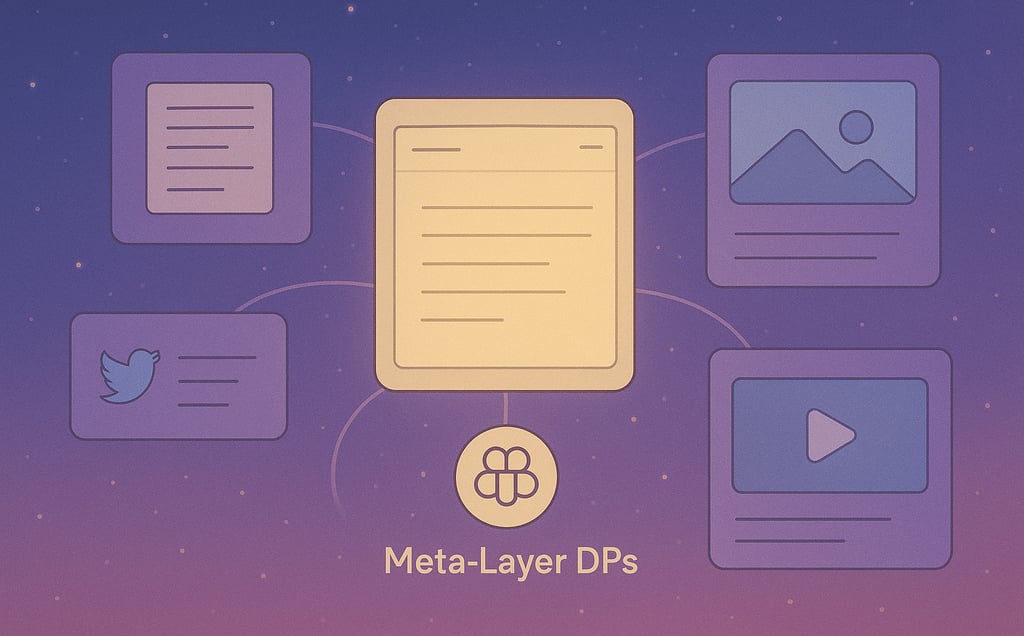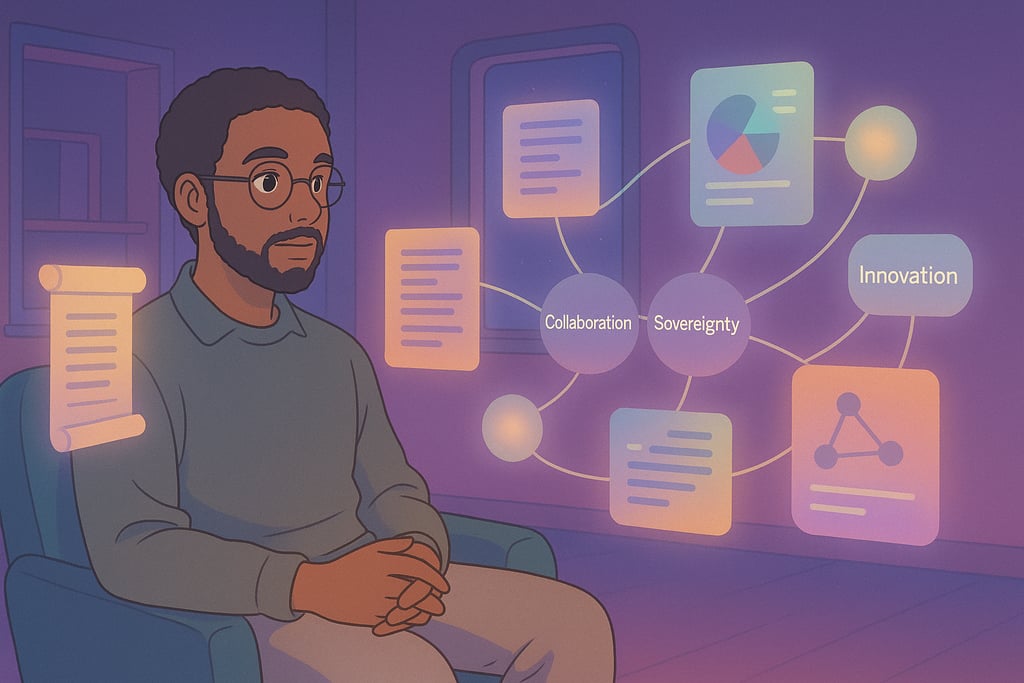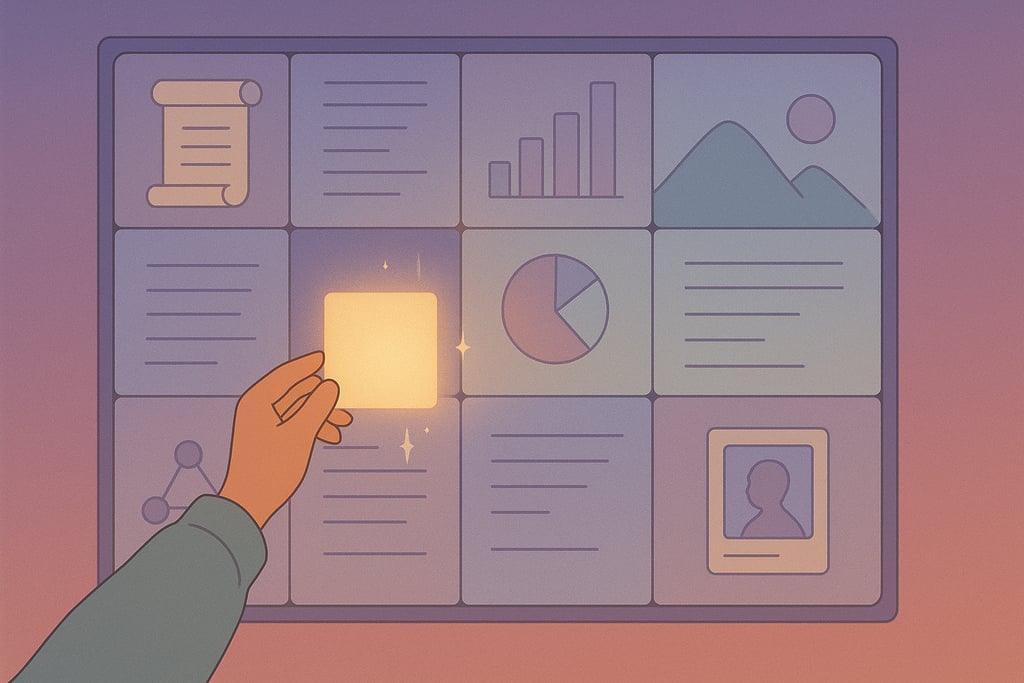Got Work You’re Proud Of—or Ideas You Care About?
Already created something meaningful--or found work that inspires you? With just a few clicks, you can align those ideas with the Meta-Layer Initiative using NotebookLM. Whether you’re a creator or curator, this guide shows how to turn your vision into a real protocol contribution in under 10 minutes--and earn a digital badge recognizing your impact. 👉 Contribute without starting from scratch.
Shiftshapr
4/24/20254 min read


🎨 Got Work You’re Proud Of—or Ideas You Care About?
You’re One Step Away from Contributing to the Meta-Layer Initiative.
Whether you’ve written a manifesto, built a prototype, recorded a podcast—or curated powerful ideas from people you admire—you’re not just a creator or a curator. You’re a systems thinker. And the Meta-Layer Initiative needs your voice.
But here’s the best part:
You don’t need to start from scratch.
Using a free tool called NotebookLM, you can map your ideas (or ones you care about) directly to the Desirable Properties of the Meta-Layer—and help shape a public protocol in just a few minutes.
🌐 What’s the Meta-Layer?
The Meta-Layer is a protocol for meaning:
A shared space above the webpage where humans and agents interact in context—with presence, creativity, and trust.
It’s being defined now.
And your ideas—your essays, projects, interviews, memes, or curated resources—could help determine what this layer will enable.
🧠 Use NotebookLM to Align Your Work with the Protocol
NotebookLM is an AI research assistant from Google that lets you upload or link to your own content—and then ask questions across those materials.
You can include up to 50 sources in a single notebook. That’s more than enough to bring in:
Your own published or unpublished works
Links to online essays, blog posts, Substacks, PDFs
Transcripts from talks or podcasts
Ideas from others that you believe should be supported in the next layer of the internet
🧭 How to Use It to Contribute
✅ Step 1: Go to NotebookLM
Sign in with a Google account. You’ll land on your Notebook Dashboard.
Click “+ New Notebook” to begin.
✅ Step 2: Add Your Sources
In the notebook’s left-hand panel, click:
“Add Sources” → Upload files or Paste Links
You can:
Upload PDFs, Google Docs, or text files
Paste links to articles, blog posts, or Substacks
Upload transcripts or documents by creators you want to support (even if you didn’t write them)
You can include up to 50 documents or URLs.
✅ Tip: You can even paste in plain text if you don’t have a file handy.
🧠 You don’t have to be the original author—curation is contribution.
If someone else’s vision resonates with you, lifting it into the protocol design process is a powerful act.
✅ Step 3: Add Meta-Layer Source Material
To align your thinking with the Meta-Layer design, paste in these two key sources:
These will help NotebookLM understand what Desirable Properties have already been defined—and how your work might align, expand, or challenge them.
✅ Step 4: Ask the AI Assistant to Identify Overlap
Once your sources are uploaded, use the “Ask a Question” field at the bottom right. Try this prompt:
“Please identify the specific Desirable Properties of the Meta-Layer that would be necessary to support or enable the ideas outlined in these sources.”
Or go deeper:
“Which Meta-Layer properties are most aligned with these works, and which ideas might require new properties or extensions?”
✅ You can also click on any individual source and highlight passages to ask targeted follow-ups.
🎧 Optional: Use the Podcast View
Want to explore how your ideas play together?
NotebookLM also offers a Podcast-style interface where you can hear your sources “discuss” or be summarized like co-hosts. It’s a fun way to surface insights, themes, or points of conflict.
To try it:
Click “Podcast” in the notebook’s top navigation bar
Select a few sources and hit Generate Podcast
You’ll get a conversational-style summary that can spark even more connections.
✨ Why This Matters
Most infrastructure is built before it’s ever made to reflect the people who’ll use it.
But the Meta-Layer is being shaped by public input—and you can help ensure that the things you’ve already made, shared, or supported help guide it.
Your vision—or the vision you carry—should not only influence the future of the web.
It should be supported by it.
📚 You don’t have to be the original author. If you’ve carried an idea, amplified a piece, or protected a principle… you’ve contributed. Now it’s time to document that contribution.
🎖️ What You’ll Receive
A BRC-333 Ordinal Badge on Bitcoin, recognizing your contribution
Recognition on the Metaweb Contributor Wall
Inclusion in the early Metaweb Cultural Archive
And the quiet satisfaction of helping guide the infrastructure of the future
✍️ Ready to Submit?
Once you’ve explored your ideas in NotebookLM and surfaced some alignment:
👉 Visit themetalayer.org/contribute
You’ll be asked to:
Share a link or description of your work (or someone else’s)
List the Desirable Properties your submission touches on
Add a Taproot-enabled Bitcoin wallet to receive your badge
🌱 The Next Layer is Being Written—Don’t Let It Forget What You’ve Already Done
Whether you’re contributing your own original work, lifting up someone else’s, or just surfacing what should be reflected in protocol design—this is your chance to make it count.
The tools are free.
The door is open.
The protocol is listening.






Contribute | Build | Participate
Join us to shape the future of the web.
Connect
© 2025. The Meta-Layer Initiative. All rights reserved.
Ecosystem
Bridgit DAO
Presence AI
Partners
Learn
About
What is a Meta-Layer
Meta-Layer Infra SIG
Join Us
Onchain
Digital Badge
FAQ
Glossary
Roadmap
Blog
